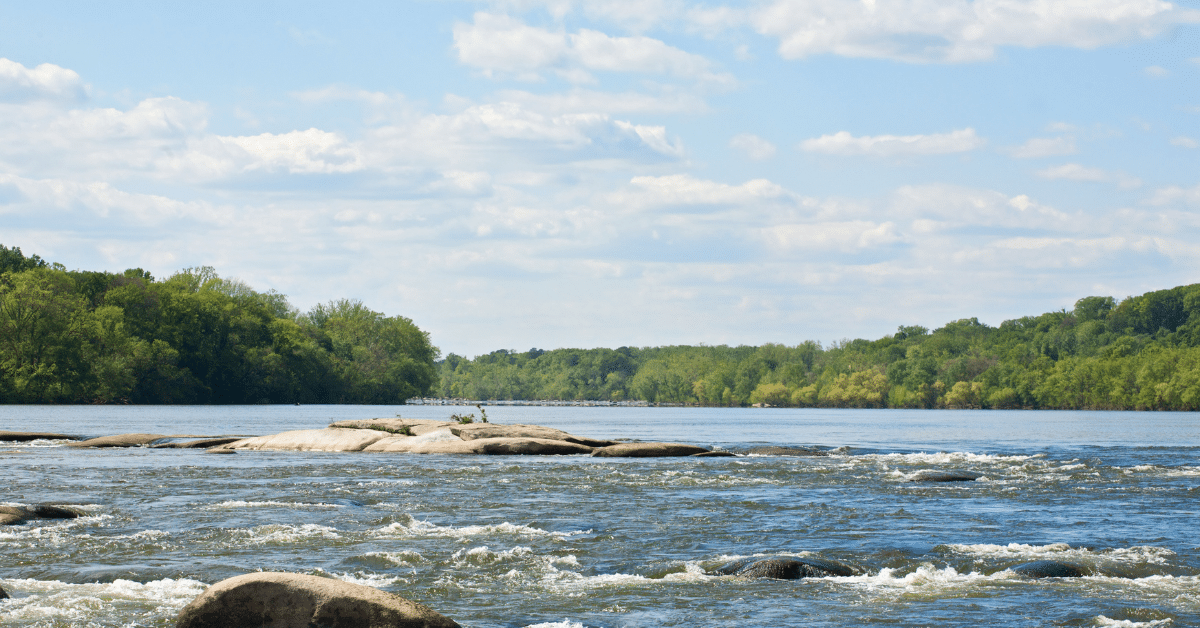
The James River: A Sacred Artery in Native American History
Long before it bore the name of an English king, the James River coursed through the heart of what is now Virginia, serving as a vital lifeline for Indigenous peoples. To the tribes who lived along its banks, the river was far more than a source of water and food—it was a spiritual, cultural, and communal artery, connecting generations, landscapes, and traditions.
A River by Many Names
While we now know it as the James River—a name given in 1607 by English colonists to honor King James I—the river had multiple Indigenous names, each reflecting the deep connection Native peoples had to the land and water. Among the most well-known is Powhatan, a name that refers both to a paramount chief and the people over whom he ruled.
Names were not merely labels but encapsulated a place’s spirit and role. They were rooted in oral traditions, tied to stories of creation, migration, and transformation.
The Powhatan Confederacy and the River’s Role
By the time of English arrival, the Powhatan Confederacy—an alliance of around 30 Algonquian-speaking tribes—inhabited the region around the James River. Led by Wahunsonacock, known as Chief Powhatan, this powerful network of tribes included the Pamunkey, Chickahominy, Appomattox, and many others.
To these communities, the river was central to daily life:
- Transportation and Trade: Dugout canoes crafted from hollowed trees glided along the James, connecting villages for trade and diplomacy. Goods like furs, shell beads (wampum), and foodstuffs flowed up and down its length.
- Food Source: The river teemed with life—sturgeon, shad, catfish, and oysters—offering abundant sustenance. Seasonal fishing practices were guided by lunar cycles and tribal knowledge.
- Spiritual Significance: Water was sacred. The river was a place for purification, prayer, and ceremony. Some tribes believed water carried messages from the spirit world or ancestors, and riverbanks served as sites for councils and rites of passage.
- Settlement Patterns: Towns and villages were strategically placed along the river, not only for practical resources but for spiritual harmony with the land. The riverbanks provided fertile soil for the cultivation of corn, beans, and squash—the “Three Sisters” central to many Eastern Woodland tribes.
Disruption and Resilience
With colonization came profound disruption. Lands were taken, names overwritten, and the spiritual and ecological balance disrupted. Yet, many tribes—such as the Pamunkey and Chickahominy—still inhabit parts of their ancestral land near the James River today, continuing traditions and revitalizing languages.
They fight not just for land or recognition, but for the stories embedded in the soil and carried by the water.
Honoring the River Today
Understanding the James River’s Native history invites a broader, more respectful engagement with the land. It’s a reminder that place names are more than convenient labels—they are echoes of deep-rooted cultures, resilience, and relationships with the natural world.
Next time you cross or walk along the James River, remember: you’re treading the paths of ancient peoples who saw the river not as a boundary, but as a bridge—between communities, between nature and spirit, and between past and present.
Learn more about what Wild Virginia is doing to protect the quality of Virginia’s waters, including rivers like the James, here.